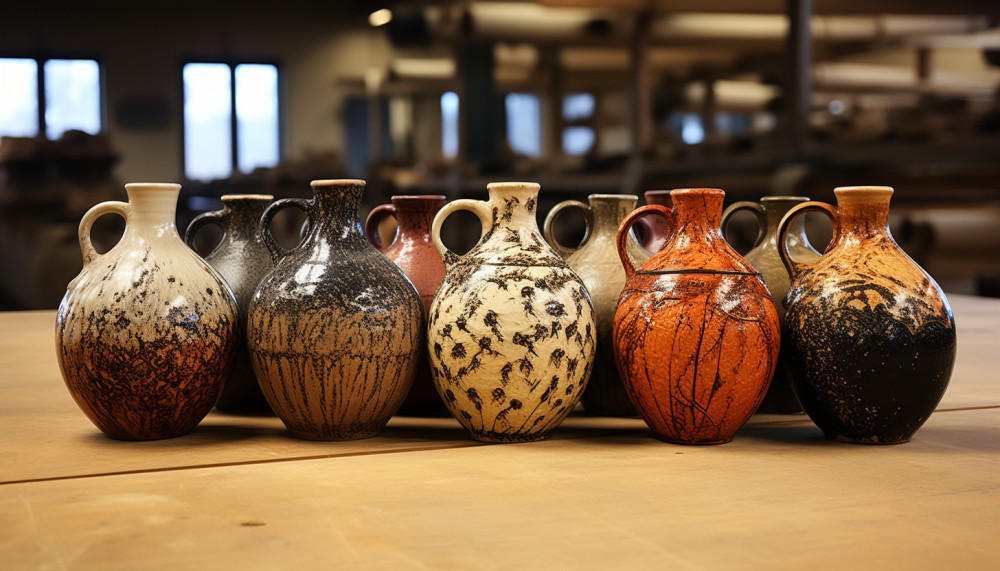Creating a unique wine experience is becoming a veritable art in haute gastronomy. To achieve this, more and more Michelin-starred chefs are turning to an ancestral method: wine in amphorae.
If you're interested in wine-related articles, download our app for IOS or Android. It will give you access to our wine lexicon, our articles and our innovative solution, designed for all wine consumers and collectors.
An age-old method brought up to date
The amphora is nothing new. This clay container, used by the Greeks and Romans, was used for traditional winemaking long before the invention of oak barrels. Abandoned over the centuries, this method is now making a comeback in the cellars of the most discerning winemakers.
This return is no accident. The amphora allows the wine to be worked gently. It encourages micro-oxygenation without imparting taste, unlike wood. As a result, the fruit retains its purity. This process is perfectly in tune with the expectations of chefs looking for precise, vibrant wines.
Why does this choice appeal to Michelin-starred chefs?
In gourmet restaurants, the experience is not limited to the plate. Wine must surprise, move and sometimes even intrigue. This is where the amphora restaurant wine comes into its own.
Wines aged in amphorae have silky textures, clean aromas and a strong identity. They are ideal for demanding cuisines, where a balance of flavors is paramount. Thanks to their aromatic purity, these wines go equally well with vegetal dishes and refined meats.
Innovative fields at the cutting edge

Several winegrowers in France and abroad are putting this tradition back at the heart of their practices. Domaine Viret in the Rhône Valley and COS in Sicily are just two examples. These houses are striving to create cuvées vin en amphore of great finesse.
Their work impresses the sommeliers of top establishments. The latter no longer hesitate to offer these atypical wines in highly elaborate food pairings. Some restaurants go even further, featuring amphora on their menus or in their tasting rooms.
A new aesthetic for wine
Beyond taste, the amphora offers an aesthetic approach. The container, raw and mineral, evokes authenticity and the earth. This symbolism speaks to lovers of natural wines and aesthetes in search of meaning. Serving a wine in an amphora becomes a stage set, a rare moment.
In some establishments, the amphorae can be seen in the dining room or in the glassed-in cellar. This creates a dialogue between tradition and modernity. The amphora is not just a winemaking tool, it becomes an artistic object, part of the experience.
Traditional winemaking: what are the benefits for wine quality?
Choosing amphora vinification means returning to a slow, unadorned fermentation process. It requires constant attention and precise know-how. The resulting wines express a clean, often mineral structure that will appeal to the finest palates.
This winemaking method respects the raw material. It reveals the characteristics of the grape variety and terroir without masking them. As a result, chefs can create daring pairings while preserving the coherence of the dish.
Restaurant amphora wine: a tool for differentiation
In a world as competitive as haute gastronomy, it's essential to stand out from the crowd. Including restaurant amphora wine on the menu enables sommeliers to offer a unique experience.
Some establishments go so far as to create an entire menu around these wines. They adapt textures, cooking methods and ingredients to enhance each cuvée. This joint effort by chefs and sommeliers results in astonishing pairings, often acclaimed by the critics.
Growing consumer interest
Customers of Michelin-starred restaurants are becoming increasingly curious. They want to understand where wine comes from, how it's made. The amphora arouses interest because of its rarity and history. It's a conversation piece at the table, a discovery in itself.
Wine-lovers appreciate new sensations. These wines, sometimes unfiltered, deliver a broad, enveloping mouthfeel, often with a saline finish. Their originality appeals to customers in search of authentic wines.
Amphora, nature and innovation: a winning combination

The use of amphorae is also part of the natural wine movement. Many winemakers who choose this container work without inputs. The result, livelier and more nuanced, is attracting a new generation of consumers.
In this context, traditional winemaking takes on a whole new meaning. It allows us to achieve a high level of quality while respecting the environment. This ethical positioning appeals to chefs and customers alike, who are concerned about their impact.
What can we expect in the years ahead?
The success of wine in amphorae shows no signs of abating. New estates are experimenting with this method every year. At the same time, amphora manufacturers are innovating with a variety of formats, adapted to the needs of professionals.
Sommeliers are also refining their expertise on these wines. They are developing specific analysis grids and exploring new pairings. This effervescence suggests a future rich in discoveries.
Amphoras, vectors of emotion and history
Ultimately, interest in wine in amphora is more than just a fashion phenomenon. It's a return to its origins, but also an exploration of new taste horizons. Thanks to this technique, traditional winemaking is enjoying a renaissance in the world's greatest cuisines.
For Michelin-starred restaurants, incorporating wines aged in amphora represents a daring gamble. But this choice allows them to surprise, delight and, above all, tell a different story. That of a wine that breathes the earth, time and the hand of man.
If you enjoyed this article, please feel free to read the following article "Guarantees required for an investment wine"which may also be of interest to you!





